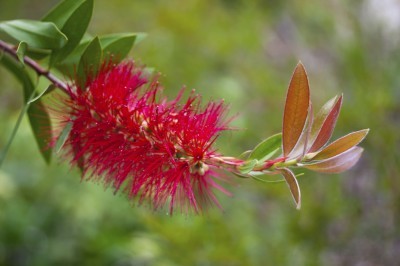






Flowering plants are angiosperms and produce a set of sexual organs in specially modified leaf sets. These blooms are sometimes arranged in groups which are called an inflorescence. What is an inflorescence? Simply put, it is a cluster of two or more flowers. Their arrangement brings to rise specific names, such as racemes or panicles. The variety of forms and shapes in an inflorescence is varied and complex. It can sometimes be tricky to ascertain if a flower is just a flower or an inflorescence. A little perspective on what do flower types mean and how to categorize them should help clear up much of the confusion.
Flowering plants are one of the visual treats in the world. The sheer number of colors and forms make angiosperm one of the most diverse forms of life on our planet. All that diversity requires descriptions to help reference which species of plant is under study. There are so many flower types and inflorescences, specific categories need to be set up to discuss their unique traits.
Even the experts have trouble categorizing different flower types. For instance, plants in the sunflower and aster family appear to have single blooms. On closer examination, however, they are actually an inflorescence. The flower is a cluster of very tiny disc florets, each sterile and surrounded by ray florets.
By contrast, a single flower will have leaves flanking it, whereas an inflorescence will have bracts or bracteoles. These are smaller than true leaves and distinctly different from the rest of the foliage, although they are, in essence, modified leaves. Often the form of the inflorescence is the best method for identifying flowers. Certain recognizable forms have been identified and classed to make this process easier.
Organizing different flower types is done with the help of an established set of terms. A single flower is generally one on a lone stem. Ideally, it contains a whorl of petals, stamen, pistil and sepals. A complete flower has all four of these parts. While a perfect flower has the stamen and pistil but may lack petals and sepals, it is still considered a flower. The inflorescence is comprised of flowers that may or may not be complete with all four parts. Identifying flowers in these clusters is done with terminology tailored to their forms and family.
Basic forms are the key to a flower type’s guide. These include:
Different flower types have individual inflorescence forms which help delineate the species and family. Once all the jargon has been brought out, the question remains why do we care?
Flowers are the main structure used to group plant families. Flowers are the reproductive system of angiosperms and visual identification helps separate the families. The only other way to identify a plant without using flower types and inflorescences is to do genetic testing or go through a complex screening process where each part of the plant is compared to lists of family traits.
To the untrained eye, each leaf, stem and root may look similar to another plant’s parts, but the flowers are instantly distinctive. Knowing the forms of different types of inflorescence gives even the novice botanist a quick method for classifying flowering plants.
Sundew flowers and Sarracenia propagation Questions.
Dahlia Flower: Meaning and Interesting Facts
List of Flower Names and Meanings of Flowers
Learn About Plant Rust Disease And Rust Treatment
Learn About Cyclamen Seed Propagation And Division
Do Pitcher Plants Bloom: Learn About Pitcher Plant Flowers
Learn About The Pollination Process And Plants That Need Pollinators
Copyright © www.100flowers.win Botanic Garden All Rights Reserved